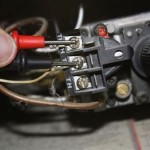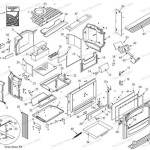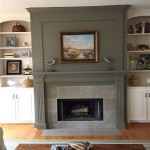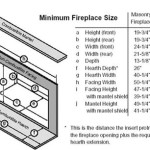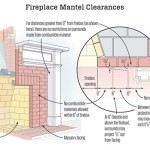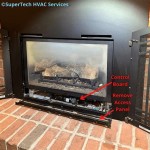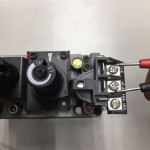Installing a Wood Stove in a Fireplace Opening: A Comprehensive Guide
Utilizing an existing fireplace opening to install a wood stove presents a practical and often cost-effective heating solution. This method can enhance heating efficiency compared to an open fireplace while maintaining the aesthetic appeal of a traditional hearth. However, the installation process requires careful planning, adherence to safety regulations, and a thorough understanding of building codes. This article provides a comprehensive guide to safely and effectively installing a wood stove within a fireplace opening.
Key Point 1: Assessing the Fireplace and Chimney
Before initiating any installation, a complete assessment of the existing fireplace and chimney is paramount. This evaluation will determine the feasibility of the project and identify any necessary repairs or modifications. Neglecting this crucial step can lead to unsafe operating conditions, including chimney fires and carbon monoxide poisoning.
Firstly, inspect the chimney flue. The flue must be appropriately sized for the wood stove. An undersized flue can restrict airflow, resulting in poor combustion and the buildup of creosote, a highly flammable substance. Conversely, an oversized flue can lead to rapid heat loss and increased creosote accumulation. Consult the wood stove manufacturer's specifications for the recommended flue size. If the existing flue is unsuitable, installing a correctly sized chimney liner is essential.
Secondly, examine the structural integrity of the chimney. Look for cracks, spalling (crumbling brickwork), and loose mortar joints. These issues can compromise the chimney's ability to contain heat and smoke safely. Addressing any structural deficiencies before installing the wood stove is crucial for long-term safety and performance. Repointing mortar joints or relining the chimney might be necessary.
Thirdly, evaluate the fireplace firebox. The firebox should be large enough to accommodate the wood stove with adequate clearance from combustible materials. The stove's dimensions, including clearances to walls and the hearth, must comply with local building codes and the manufacturer's instructions. A professional may need to assess the firebox and make recommendations for any necessary modifications.
Finally, ensure the hearth extension meets the required safety standards. The hearth extension is the non-combustible area in front of the fireplace opening. It protects the flooring from sparks and embers that may escape from the stove. Local building codes and the stove manufacturer's specifications dictate the required dimensions of the hearth extension. If the existing hearth extension is insufficient, it must be extended or replaced with a larger, non-combustible surface.
Key Point 2: Selecting the Right Wood Stove and Installation Materials
Choosing the appropriate wood stove and accompanying materials is critical for safe and efficient operation. Several factors influence this selection, including heating needs, space constraints, and budget. Investing in high-quality components ensures longevity and minimizes potential hazards.
The first consideration is the appropriate BTU (British Thermal Units) output of the wood stove. This rating indicates the stove's heating capacity. Select a stove with a BTU output that matches the size of the area to be heated. An oversized stove can lead to overheating and inefficient fuel consumption, while an undersized stove may struggle to maintain a comfortable temperature.
Next, consider the type of wood stove. Options include radiant stoves, which primarily emit heat directly from their surfaces, and convective stoves, which circulate warm air using a system of air chambers. Convective stoves tend to provide more even heat distribution, while radiant stoves offer intense localized heat.
Selecting a suitable chimney liner is equally important. A stainless steel chimney liner is generally recommended due to its durability and resistance to corrosion. The liner should be sized appropriately for the wood stove and installed according to the manufacturer's instructions. Proper insulation around the liner is also crucial, preventing heat loss and reducing the risk of creosote buildup.
Other essential materials include stove pipe, connectors, and sealing compounds. Use stove pipe specifically designed for wood-burning appliances, ensuring it meets safety standards and is the correct diameter for the stove and chimney liner. High-temperature sealant is necessary to create airtight connections between stove pipe sections and the chimney liner, preventing smoke leakage.
Also, consider purchasing a carbon monoxide detector. This device provides an early warning of carbon monoxide leaks, which can be a silent and deadly hazard. Place the detector near the sleeping area, following the manufacturer's instructions for installation and maintenance.
Key Point 3: Executing the Installation Process Safely and Effectively
The installation process requires meticulous attention to detail and strict adherence to safety guidelines. If unsure about any aspect of the installation, consult a qualified professional. A poorly installed wood stove can pose significant safety risks.
Begin by preparing the fireplace opening. Clean the firebox thoroughly, removing any debris or soot. Ensure the hearth extension is clean and free of obstructions. If modifications to the firebox or hearth extension are required, complete them before proceeding with the stove installation.
Next, install the chimney liner. This usually involves lowering the liner from the top of the chimney, connecting it to the stove adapter, and securing it at both ends. Follow the manufacturer's instructions carefully, paying close attention to sealing connections and insulating the liner. A properly installed and insulated liner is essential for optimal stove performance and safety.
Position the wood stove within the fireplace opening. Ensure the stove sits level and has adequate clearance from combustible materials. Use non-combustible shims if necessary to level the stove. Connect the stove pipe to the stove collar and the chimney liner adapter, securing each connection with high-temperature sealant and screws. Ensure all joints are airtight to prevent smoke leakage.
Install any required heat shields. Heat shields protect combustible walls from excessive heat, reducing the risk of fire. Install the heat shields according to the manufacturer's instructions, ensuring they are properly spaced and secured.
Once the stove is installed, perform a test burn. Start with a small fire, gradually increasing the intensity over time. Monitor the stove and chimney for any signs of smoke leakage or overheating. Check the carbon monoxide detector to ensure it is functioning correctly. If any issues arise, extinguish the fire immediately and address the problem before continuing.
After the installation is complete, contact your local building department to schedule an inspection. A qualified inspector will verify that the installation meets all applicable codes and regulations. Obtaining a building permit and passing inspection are crucial for ensuring the safety and legality of the installation.

Can I Put A Wood Stove In My Fireplace

Can You Install A Wood Stove In Fireplace Direct Stoves

Have A Pro Install Wood Stoves Greenville Sc Blue Sky Chimney

Converting A Fireplace To Wood Burning Stove Chesneys

Converting A Fireplace To Wood Burning Stove Chesneys

How To Install A Wood Stove Step By Instructions

Can You Install A Wood Burning Stove In An Existing Fireplace
Freestanding Stove In Fireplace Hearth Com Forums Home

How To Install A Wood Burning Stove Into An Existing Fireplace

Can You Install A Wood Burning Stove In An Existing Fireplace
Related Posts

